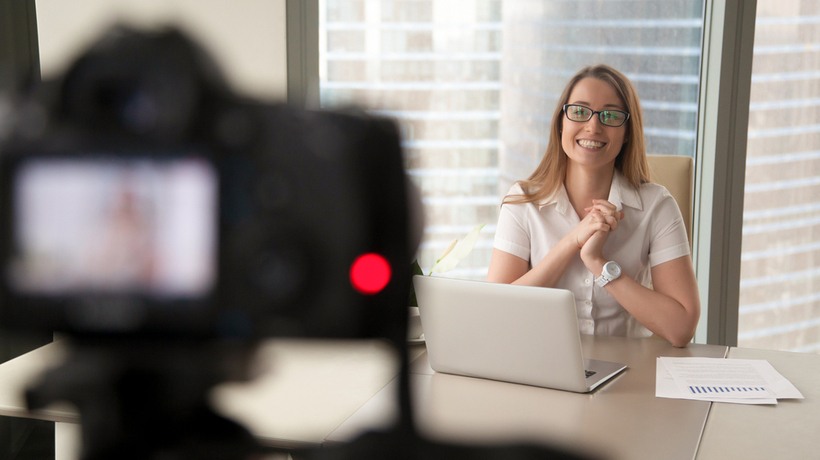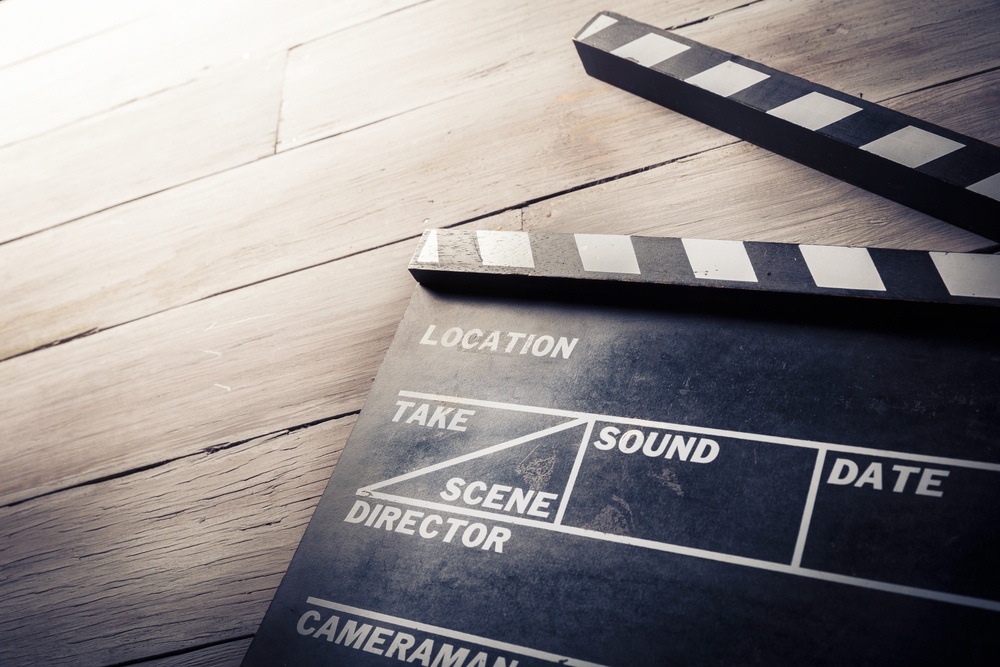Filming Your Online Course Videos: Lights, Camera, Action!
Presenting on camera is extremely different to presenting face to face. Along with that, comes the terrifying prospect that you are immortalizing yourself in the capturing of a video, that could be viewed by millions of people for the rest of time. Gulp.
It’s not surprising that people are daunted by it—and it’s not a skill that many of us are naturally born with. Yet so many course creators put themselves under the pressure of thinking that they have to be a perfect presenter on ‘take 1’ of their first ever shot of filming educational videos. Give yourself a break; there’s much more to it than that.
My First Time In Front Of The Camera
I remember the first time I was ever put in front of big blinding lights to speak to the camera. I was on a speaker training program, and we had to deliver our pretend ‘TED Talk’. I was cockier than a Cockerel in mating season. I’d been teaching for the best part of a decade. I’d been a professional speaker and presenter for years. I knew exactly what I was doing.
But the second that little red light turned on, staring into the camera lens was a bit like staring down the barrel of a gun. I couldn’t force a single word out of my mouth, let alone string a sentence together! I still have that very video recording and you can see my legs shaking as they tried to hold the sinking weight of my terrified body up.
At first, I found this humiliating (I should be good at this), then upsetting (I can’t believe I’m no good at this), followed quickly by anger (this is so annoying!). Then fear came (I’m going to look stupid, I’m going to fail in front of everybody). Self-doubt and excuses arrived shortly after (I can't do this, I’m a teacher, not a TV presenter, I’m not cut out for this). Soon enough my instinct to protect myself from danger went into action and had me doing everything from faking an illness to rebelliously walking out of the training, as if I was above ‘needing to do this silly exercise’.
My Realization
Sitting outside the training studio, it occurred to me that teaching on camera was an extremely different skill from teaching face to face altogether, and that I had a whole lot of learning to do. I was beating myself up because I hadn’t mastered the art of something the first time I’d ever given it a go.
Like I did, too many course creators and edupreneurs put themselves under the pressure of thinking that they have to handle a car perfectly when they are put in the driver's seat. Not true. You have to learn how to hold the steering wheel first. So many people walk into a filming studio and think they have to perform like a Hollywood A-lister in their first ever take. Talk about putting pressure on ourselves!
How We Respond To New Situations
The first thing we need to do in any new situation is to allow our body the opportunity to familiarize itself with the environment it is in. Our natural instinct is to protect ourselves from danger, and this means that in unfamiliar situations, our body is flooded with chemicals that will make us fight or run away.
Our stomachs go bubbly, our guts knot up, our heads hot-freeze, we sweat all over, our muscles tense, and everything inside of us works in opposition to us remaining in that place. It’s not exactly the winning combo for thinking and speaking eloquently with a smile on our faces.
But soon enough, the body will realize that we are not in danger. It begins to release the muscles, ease up on the chemical floodgates and start turning our brain switches back on. The more our body familiarises with the environment, the safer it will feel, and the less of a physical and biological battle it will present to us. Eventually, it will give up the fight altogether and allow us to start honing the development of a new skill. Just like learning any new skill, know that it is going to take a little time to get used to.
Allow plenty of time to just let your body ‘be’ in front of the camera. Don't try to make your words perfect or be flawless in your delivery. Just learn to get comfortable talking to a camera. Talk about what you had for breakfast, what you did yesterday, and where you’d like to go on holiday this year. The more you get used to talking to that little black hole, the sooner you’ll be able to present like a pro. Remember that it’s only a video. You can press delete. You can film a new one and replace it later.
What If My Videos Are Not ‘Hollywood’ Perfect?
I have taken $5 courses on Udemy that were way better than ones that I’ve paid an excess of $25,000 for. Fact. And by ‘better’, I mean what I learned from them. I took $25,000+ courses—that had all the lights and bling; the private multi-million-dollar mansion, the showy email campaigns, closed captioned videos, adrenaline-pumping intro music and big Facebook groups to boot.
But almost every time, it's been the simple, homemade $5 courses that win my highest ratings. This is because today, quality is not determined by how long a course is, whether it's been filmed by a professional crew over-looking the most expensive suburb on earth, or how many effects have been used to animate the speaker's on-screen name.
In a world saturated with information, ‘quality’ is often determined by whether learners feel that a course has given them the information they wanted, as quickly and directly as possible. Yes, it's great if you can afford to buy yourself a home studio, or better yet, hire a professional film crew, but for many edupreneurs starting out, this isn't an option. I would highly encourage you to not be stopped by the idea you need to be a Hollywood show star. Share your expertise with the world anyway.
The Reality Of A Freelancer's World
These days it is becoming more and more commonplace and accepted that freelancers and self-employed business owners work from home, usually in a spare room or a corner of the kitchen table. In fact, live stream videos accounted for the majority of internet traffic in 2017 according to the Huffington Post! Livestream videos! Plain, simple, zero-effects videos that are totally raw and usually recorded on a mobile phone!
Don’t overthink this whole filming thing. Remember that people are coming to you and your courses for the content, not to judge your backdrop. If you are ashamed of your lounge room wallpaper, you could buy a cheap sheet of material to place behind you, or get a pull-up banner with your business logo, and block off your surroundings that way. If you don't have very good lighting and are worried that will affect your professionalism, then simply record ‘voice over’ slides or screencast videos.
Your sound is important if you want to meet the quality criteria of online course marketplaces and enable your learners to clearly hear what you are saying, but having a Hollywood production on a training video is certainly not a necessary requirement to help change people's lives.
No online course is cast in stone. Simply upgrade your content as you start bringing more money in and increase your experience.
There are a number of free tools and apps out there that enable you to create really professional looking videos from home, without the cost. In fact, my first home studio, which included two large softbox lights on stands and a backdrop in three colors, set me back $256. I made that money back in the first 15 minutes of releasing my first online course. Simply do a little practice, and with a green sheet of material and some good lighting, you can easily produce studio quality training videos from your kitchen.









